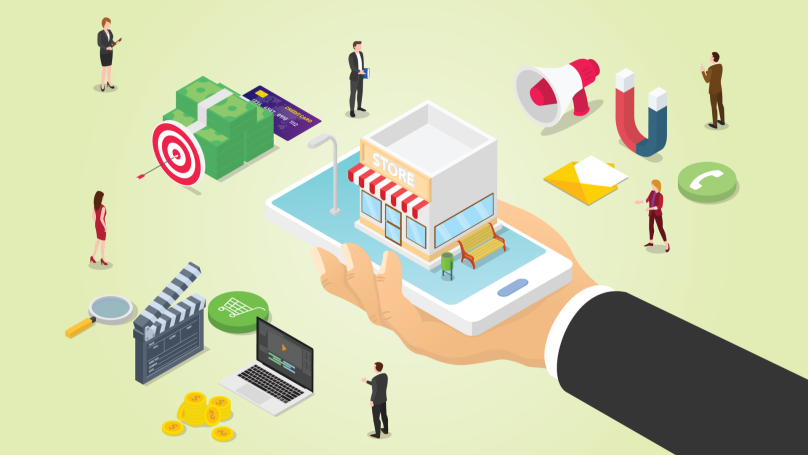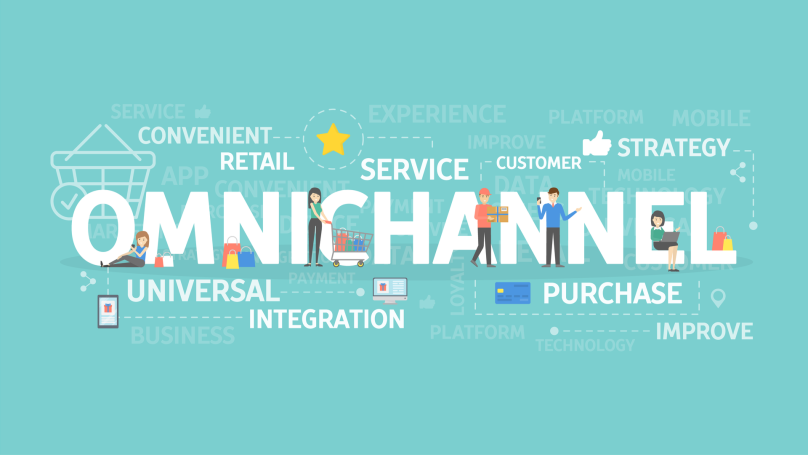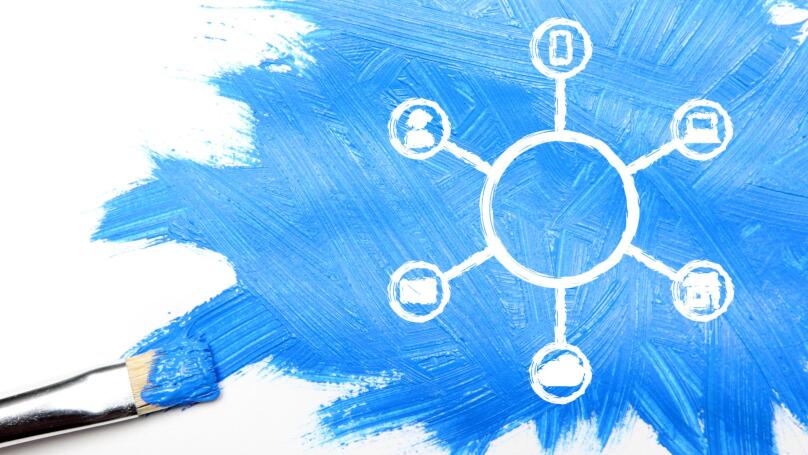Omnichannel
What is omnichannel and the definition of omnichannel

Omnichannel is a model that connects different communication channels with customers and unites them into a single system. The main principle of omnichannel is an integrated approach, shifting focus from a particular channel or traffic to the user experience and the customer journey. "Omnichannel means all marketing channels work as one, having an equal impact on the customer and equal efficiency in bringing the customer to the purchase.
Why do we need omnichannel?
The main goal of omnichannel is to facilitate the customer journey and create a positive customer experience. A retailer or online business uses various channels to help customers. Thus, omnichannel is convenient for customers and beneficial to companies. Furthermore, customers can choose their own communication channel based on their preferences and tasks.
Also, omnichannel lets the business optimize its marketing costs, close deals faster, increase both repeat sales and customer loyalty (it is increased by personilizing the interaction). An excellent example of omnichannel: a person has placed an online order, calls the company in a couple of days to find out its status, and the operator right from the start addresses the customer by name.
Omnichannel Strategy

Omnichannel means using multiple channels at the same time. Thus, the omnichannel strategy embraces an omnichannel approach to communicating with the audience through offline interaction (usually sellers and support services) and online tools. The omnichannel strategy is crucial for big companies with a large audience. This is because this strategy can cover all existing segments with the target audience while maintaining the brand's position in the market. In addition, omnichannel helps manage projects and can be used in completely different niches, for example, in a bank.
Omnichannel vs. multichannel: what's the difference
Omnichannel is a seamless system of interaction. The customer can easily switch from one communication channel to another without interrupting the dialog with the company and keep the message history, status, etc. On the other hand, multichannel uses multiple channels independently of each other - when the company uses an omnichannel contact center, email correspondence, and chat with no unified structure and database.
Therefore, the key difference between omnichannel and multichannel is the ongoing communication of channels and the ability to contact the customer with maximum convenience for them and maximum benefit for the company. Thanks to these unique concept features, omnichannel is preferable to multichannel.
Omnichannel in sales
All modern CRM systems have a function that provides omnichannel sales. For example, the collection of order requests comes to the database from many channels at once: through the form on the site, the shopping cart, the lead form, a call to the operator, personal messages in social networks, etc. So, customers make purchases faster and easier because they do not need to go from the company's Instagram page to its website to place an order or make a phone call.
Here's what omnichannel sales look like in e-commerce:
- The customer gets to the company's website through contextual advertising and asks the online consultant to choose the right product.
- The chat manager provides the consultation and, if the customer is satisfied with everything, clarifies the order's details on the phone.
- At the end of the conversation, the customer receives a text message on the phone with confirmed arrangements, terms, order details, and a payment link (if applicable).
- The customer receives information about products related to their order in the email.
- Later, the manager will contact the client via WhatsApp with any questions or promotions.
Omnichannel in marketing

An omnichannel system in marketing combines different marketing channels to achieve a specific result. For example, email newsletters, push messages, social media advertising, and retargeting "collaborate" to make a potential customer go to the site and complete the purchase. As a rule, omnichannel marketing is always outward communication. That is, the company addresses its customers, not vice versa.
In practice, omnichannel marketing is as follows:
- The customer bought a cat scratcher at a store and registered a bonus card in the process to get a discount. So, their phone number and data got into the store database.
- After a couple of weeks, the store sends the customer a newsletter with a Christmas sale of cat food along with some other products to explore the interests of the new customer.
- The customer followed only the link leading to the food. Consequently, the store displays ads on Facebook and a search engine for the cat food they sell over the next few days.
- A month later, the client receives a personalized offer on WhatsApp to buy 5 lb. of food for the price of 2 lb.
This is what omnichannel promotion is.
Omnichannel Analytics
Analytics is the central piece of any business marketing strategy. Specifically, omnichannel analytics allows you to study the customer's interests to understand which offer will be more appealing to them. You will need to analyze the data collected by omnichannel communications applied in the business. It is also necessary to analyze how the audience reacts to specific advertising campaigns, proposals, and the omnichannel itself and if there are errors or shortcomings. Omnichannel analytics uses CRM data, omnichannel rating, call tracking, end-to-end analytics, and suggestive algorithms to show users only relevant offers based on their preferences. The sales system, logistics, trade environment, and merchandise sales - they all depend on the data collected in the omnichannel analytics process.
Introduction of omnichannel

How do companies achieve omnichannel? The implementation of omnichannel takes place in several stages:
- Strategy development for the transition to the omnichannel model. Answer the following questions:
- What channels can be integrated first to spend the least amount of resources?
- What data do you want to get from them?
- How and for what purpose will you use this data?
- Training and preparation of employees for the use of omnichannel.
- Which employees are responsible for which channel?
- How many employees are required to ensure the effective operation of the omnichannel center?
- How to motivate them?
- How to organize their training in omnichannel technologies?
- How to provide them with access to all the company's relevant information?
- What KPIs should they follow?
- Selection and implementation of omnichannel technologies.
- What technologies are needed to implement omnichannel?
- Are there any special requirements for them?
- Based on what principle do they select the tools, solutions, and technologies?
- Development of a marketing campaign and notification of customers about new service and sales channels.
- How to notify customers of new ways they can communicate?
- How to motivate them to use new channels?
- How and with what to analyze customer's experience to adjust the omnichannel strategy?
When expanding communication channels, it is worth relying on the audience's preferences and which channels are more familiar and convenient for them.
Omnichannel tools

You can use the following omnichannel tools and services that ensure omnichannel development:
- Salesforce Social Hub: An online hub that provides fast customer feedback and engagement. The program considers analytics as it was originally designed to scale companies, monitor different communication channels, and collect audience data.
- Crowdbooster. Analytics of social networks with the automatic creation of offers will help your business expand its presence on the Internet. For example, this service is actively used and promoted by the well-known American ice cream company Ben & Jerry's.
- Userlike Live Chat: Software for integrating live chat into the website, which will allow you to respond to your customers' requests and provide them with additional information about the company and its products.
- TalkDesk: Call center software, which is ideal for small and medium-sized businesses due to its budget and convenience. This tool allows you to track customer interactions and integrates with most CRMs (for example, Salesforce).
- Helpshift: The omnichannel platform for customer service and support through mobile applications.
Examples of omnichannel
An example of an omnichannel is Starbucks Coffee. The company introduced a card, similar to a credit card, which customers can use to pay in the coffee shops. You can put money on the card through an offline cash register, mobile application, or website. Also, using the app, customers can choose music that will sound in the coffee shop and order coffee in the name specified in the profile.
What does omnichannel look like in retail? Clothing and footwear brand Timberland. The company forms personal offers for customers based on their purchasing behavior, including offline locations worldwide. At any store, the customer can use a tablet to view the goods in stock to check available sizes, their characteristics, etc. The data of the search is also stored, taken into account, and used in the email newsletters.























